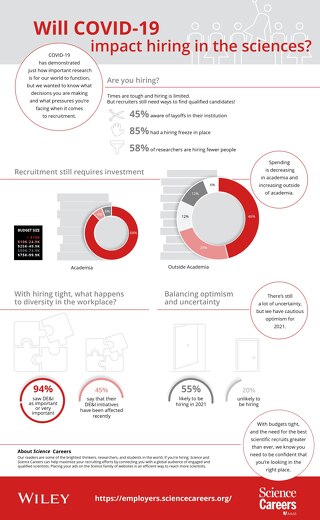why-more-journals-are-joining-our-transparent-peer-review-pilot
September 20, 2019
When we think of quality in peer review, the theme of this year’s Peer Review Week, we inevitably start thinking about transparency. How do we make visible improvements to quality in peer review when much of the process happens behind closed doors? At Wiley, we’re helping researchers to thrive when they embrace open research. Opening up critical parts of what we do, for example by making peer review transparent, is totally in-step with that and delivers new levels of accountability and insights for researchers.
During Peer Review Week 2018, we announced the launch of the world’s first scalable approach to transparent peer review (TPR) with Web of Science Group (Publons and ScholarOne). We started with a pilot at one journal, Clinical Genetics. We gave authors the choice to have peer reviewers’ reports, their own authors’ responses, and the editor’s decision letters published alongside their articles, hosted by Publons and made openly available. We started to make that peer review history accessible via a link from the authors’ published article, like this, and we provided fully

citable DOIs for everything. Our early results with Clinical Genetics were compelling, and in January 2019 we added 10 more journals to our pilot.
For Peer Review Week 2019, we’re delighted to share answers to the key questions we’re addressing with our pilot (spoiler alert: authors love TPR, and the time taken to complete peer review with TPR doesn’t change). We’re even more excited to announce the next wave of 29 Wiley journals joining the pilot. We’re working with great journals and partners to challenge perceptions about openness and transparency in peer review, and we’re winning hearts as well as minds.
Where We Started
In the summer of 2017, Daniel Hook of Digital Science asked a room full of 100 Wiley journal editors and publishers to get on their feet and stand up. He asked them to walk to the left of the room if they thought transparent peer review (or open peer review) would improve things for researchers, and to the right of the room if they thought the opposite (here’s a Twitter hashtag from the meeting; it was part of our editor symposia series).
Guess what happened? Almost all of us—skeptics that we naturally are—walked to the right. For some of us, it was the comfort of retaining the status quo. For others, it was fear that researchers would be put-off and would choose to submit their papers elsewhere, or that researchers would decline invitations to peer review. For me, it was that the whole idea would be more (hard) work for everyone.
So, we decided to challenge our own perceptions. We scoped-out a pilot to gather data that would show us whether our concerns about TPR were well-founded. To do that, Wiley and Web of Science Group (Publons and ScholarOne) designed a new approach to TPR that gave authors the choice, that was easy to turn on, that could adapt to single- and double-blind peer review with little change for editors and journal teams, and that had the potential to scale-up at Wiley and elsewhere.
Where We Are Now
One year on, we’re pleased to share reassuring new results. Out of the eleven journals in the pilot, we looked at seven that were completely new adopters—they previously offered single- or double-blind peer review with no option for transparency. We evaluated data from February to May 2019 and compared performance for articles under TPR with those from the same journals in the previous year.
The headlines are exciting.
- A high proportion of authors chose transparent peer review. 1,841 of 2,107 authors chose TPR, meaning 87% of authors agreed to have peer reviewers’ reports, their own authors’ responses, and the editors’ decision letters published alongside their articles.
- On average, editors did not send more invitations to secure the number of peer reviewers they were looking for. Four journals showed a small decrease in the number of reviewers invited; two had a small increase (an increase of less than 0.5 reviewers invited in order to secure the required number of peer reviewers); and one journal (a journal with a lower number of submissions and a smaller sample size) had an increase on average of 1.6 reviewers invited per paper.
- The time taken to share an initial decision with the authors after peer review did not change. Overall, on average across the journals, there was no meaningful difference in the time taken to reach a first decision under TPR. Within this overall result, two journals did show meaningful differences: they were quicker by around 20 days.
- Editors changed their behavior, by making more direct decisions for authors. When operating with TPR, more decisions were made by the editor directly, rather than sending the article out for review. On average, editors declined to send manuscripts out for peer review in 62% of manuscripts compared with 53% previously. Of course, there may be other reasons beyond TPR for this change—we’re reporting observations, without controlling for other things that might have made a difference.
What This Means
The majority of authors are choosing transparent peer review, and we’re not seeing any negative effects on the review process. For authors who submit their work to journals that give them the choice of TPR, and for the editors and publishers of the brave journals taking part in our pilot, we hope these are reassuring and exciting results. They show us that we were right to challenge our perceptions. For other journals, including the 29 at Wiley that are about to launch TPR (plus the journals at other publishers who choose to adopt the same solution), they should be equally inspiring.
What’s Next
We are thrilled to announce an increasing number of leading Wiley journals will begin offering TPR in September and October 2019. The 29 journals below, which serve researchers from a wide range of disciplines, bring our current total to 40:
- Archaeometry
- Bioengineering & Translational Medicine
- Biotechnology Progress
- Brain and Behavior
- Clinical and Experimental Pharmacology and Physiology
- Ecology Letters
- Equine Veterinary Journal
- The FEBS Journal
- GastroHep
- Genetics & Genomics Next
- Geological Journal
- Human Behavior and Emerging Technologies
- Influenza and other Respiratory Viruses
- International Migration
- International Transactions on Electrical Energy Systems
- JBMR Plus
- Journal of Avian Biology
- The Journal of Bone and Mineral Research
- Journal of Community Psychology
- The Journal of Comparative Neurology
- The Journal of Evolutionary Biology
- Journal of Neuroscience Research
- Journal of Oral Rehabilitation
- Journal of Theoretical Social Psychology
- Neuroscience Next
- Pediatric Allergy and Immunology
- Pediatric Diabetes
- Proteins: Structure, Function, and Bioinformatics
- Veterinary Medicine and Science
Offering TPR to researchers in this way will bring new insights into how peer review works in a wide range of disciplines and will offer new kinds of openness from leading journals. We’ll continue to share our findings because our goal is to continue to scale-up, involving more journals and—as we are beginning to see—other publishers.
For Wiley editors, we’re hosting a waitlist for the next group of journals that would like to introduce more transparency to the peer review process. To add your journal to the TPR waitlist now, please speak with your Wiley Journal Publishing Manager.
We look forward to sharing more insights along our journey, and we welcome your feedback.











